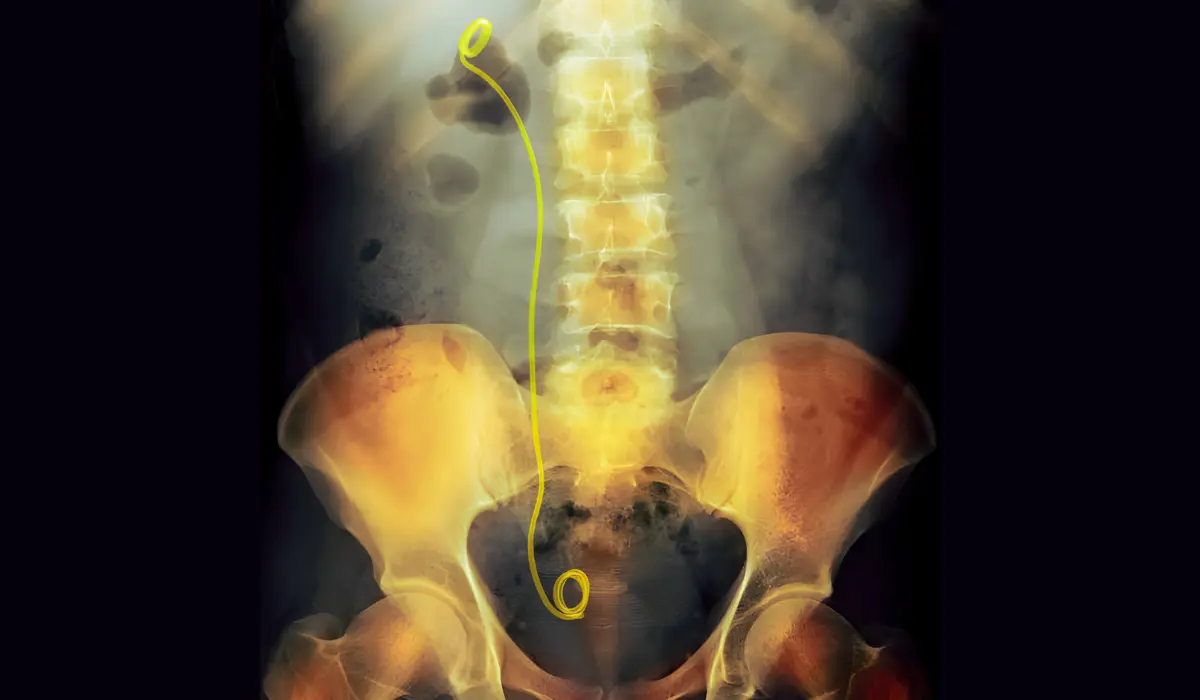Kidney stent or ureteral stent placement involves placing a small, flexible tube in your ureter. This helps urine pass from the kidney to the bladder. This is usually done to treat or prevent obstructions. Obstructions can interfere with urine passage. Living with a stent can be uncomfortable. This is especially true when trying to find a comfortable sleeping position. It’s necessary to sustain kidney functioning.
What Is A Kidney Stent?
A ureter stent is fabricated to sustain the patency of the ureter, which allows urine to flow freely. It is usually used in cases such as kidney stones, tumors, or after certain surgical procedures. Composed of a soft, flexible material, the stent is created with coils at each end to hold it in place in the ureter.

Kidney Stents Categories
Kidney stents come in two forms. Indwell stents are totally inside. External stents extend somewhat outside the body. The selection among these groups is mostly determined by the patient’s medical needs. It is also based on how long the patient needs the stent.
How To Sleep With A Kidney Stent?
Comfortable sleep with a kidney stent is very important but can be quite difficult. Here are some strategies to help:
Identify the Best Sleeping Position: Usually, lying on your back or the side opposite from the stent area is most preferable. This reduces pressure on the area of the kidney affected and hence may reduce pain.
Utilize Pillows for Extra Support: The right pillow setup can be a game changer. Side sleepers can use a pillow between the knees to add some more comfort. Back sleepers can place a pillow under their knees for light support and to bend their legs.
Maintain Hydration: Hydration is the secret to recovery and infection prevention. Balance is essential. Many overnight bathroom trips can disrupt sleep patterns.
What Not To Do With A Kidney Stent?
When you have a kidney stent, avoid certain activities and behaviors. Avoid vigorous exercises or lifting of heavy objects, as these could dislocate the stent. Take care with the OTC pain relievers. Always seek your healthcare provider’s advice. They can help find safe pain control solutions for you.
How Do You Stop A Kidney Stent From Hurting?
Pain management is one of the most important factors when living with a kidney stent. Here are some approaches:
Medication: Your doctor may prescribe specific pain relievers. You can use them safely with a kidney stent. It is crucial to adhere zealously to their advice so that complications are avoided. Heat Therapy: Applying a heating pad to the lower back or abdomen can alleviate stent-associated pain. Moderate the heat to prevent skin burns.
Relaxation Technique: Practices like deep breathing, meditation, and gentle yoga can ease pain. They eliminate muscle tension and induce relaxation.
What Is The Best Sleeping Position With A Kidney Stent?
The best way to sleep is different for each person. In general, it is recommended to sleep on your back or on the opposite side from where the stent was placed. This can relieve the direct pressure on the renal area, which can lead to pain and discomfort.
Does A Heating Pad Help With Kidney Stent Pain?
Certainly, a heating pad is one of the ways to control kidney stent pain. The heat contributes to muscle relaxation. It can also produce a comforting effect on the area, eliminating pain. Nonetheless, the heating pad should be used with caution. This will help avoid burning or skin irritation from a high-temperature setting.
Is It Painful To Pee After A Kidney Stent?
There may be some pain at the time of urination after a kidney stent is placed, particularly in the first few days. The feeling is usually transient and should decrease as the body gets used to the stent.
Kidney Stent Restrictions
While recovering with a kidney stent, you must follow certain restrictions. This will ensure proper healing. Refrain from intense physical exercises that can shift the stent. Control your hydration levels to support normal kidney function without flooding the body. Adhere to the nutritional advice of your healthcare provider to help you recover.
How Long Does It Take To Recover From Kidney Stent Surgery?
The recovery period after kidney stent surgery varies from person to person. It depends on the reason for the stent and overall health. The recovery period varies from a few weeks to several months. During this period, adhere to your healthcare provider’s instructions. Attend all follow-up visits to monitor your improvement.
So, are these strategies the breakthrough for those trying to get comfortable while sleeping with a kidney stent? Proper positioning, heat therapy, and staying hydrated can help you cope better with kidney stent pain. Moderating activity is also important. Recovery is different for everybody. It’s important to communicate openly with healthcare providers. Properly managed, the trip with a kidney stent will result in an easier recovery and calm nights.
FAQs
Yes, sleeping on the side where there is no stent can be more convenient.
It will take a week at most to figure out how to sleep comfortably with the stent.
Indeed, a heating pad on low will help take away the pain and allow you to rest.
Yes, it’s normal to suffer from slight pain or a feeling of burning when you urinate after having a stent placed.
Do not lift heavy things. Perform vigorous exercises and activities that make your body work hard.

